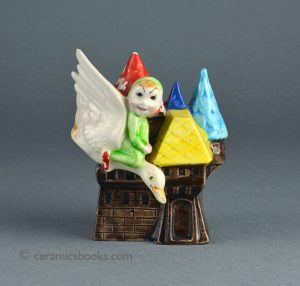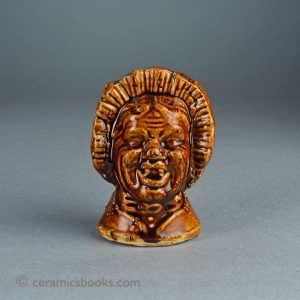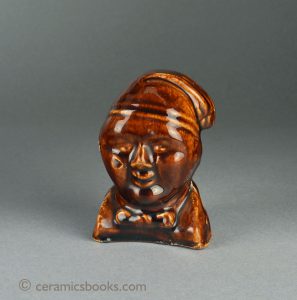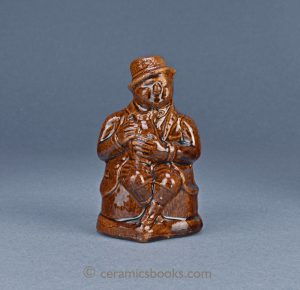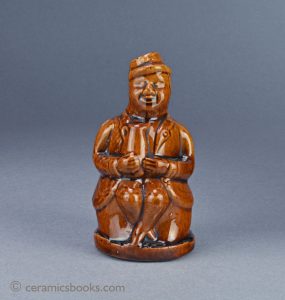Moneyboxes / Coin Banks
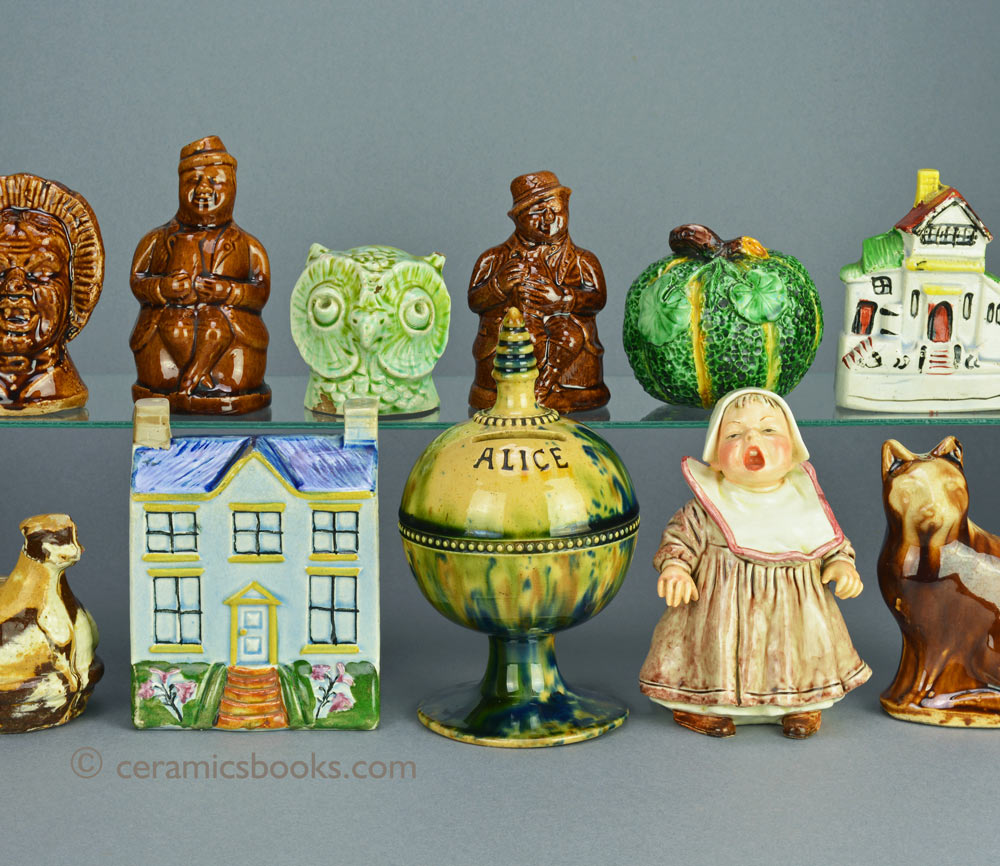
Ceramic moneyboxes are a subject which I have been researching for some time. I have a large personal collection that I hope to one day include in a book about the subject. I would be most grateful to hear from anyone who has further information about coin banks / moneyboxes, or who has a small or large collection that they would be prepared to let me include in such a publication. I may be able to offer photography for your collection in return for allowing me to take photos, and of course all contributions would be fully acknowledged.
Paul Bohanna
Ceramic moneyboxes have been produced in many countries worldwide and often for many centuries. Most examples date from the mid C19th to the early C20th and later. Moneyboxes are known by many different names depending upon location. The usual name in England is moneybox, whilst coin bank is mostly used in the United States. In Scotland they may be called pirlie banks or savings banks.
Most collectable are those moneyboxes which have no bung hole for retrieving the coins. These coin banks were presumably intended to be smashed to get at the contents, which may explain why they are so rare. The introduction of removable plugs was widespread by around 1940.
Ceramic moneyboxes are rare, many are so rare that only a few or even just one example is known. They come in a huge range of shapes and subjects and may be made in a wide range of wares and decorative finishes.
The few books published on ceramic moneyboxes are pioneers into an under-
A, B, C, D, E, and F, with ‘A’ being (relatively) common and ‘F’ signifying extremely rare (maybe only 1 to 3 examples known). However even ‘A’ rated ceramic coin banks are scarce.
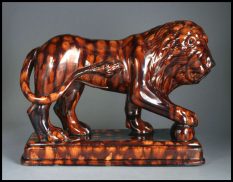
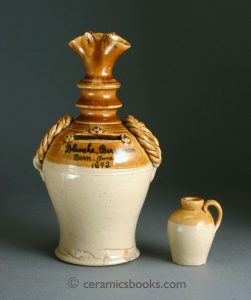
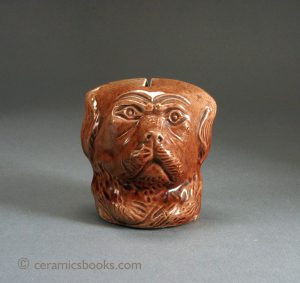
![Treacleware dog's head moneybox. Often attributed to Scotland but made widely in Staffordshire. Rated D [Huebner] but A-B more realistic. 85mm High. c.1860-1890. AP/381.](https://www.ceramicsbooks.com/wp-content/uploads/2021/11/ap381_w1000-300x255.jpg)
